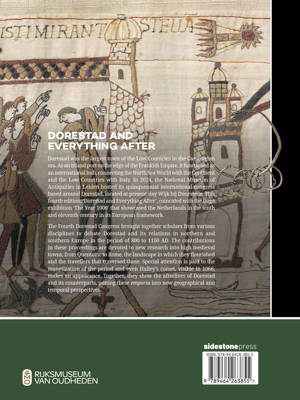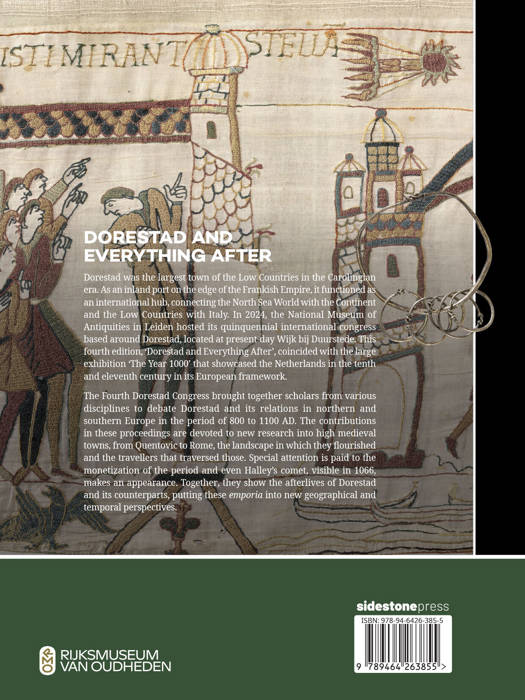
- Afhalen na 1 uur in een winkel met voorraad
- Gratis thuislevering in België vanaf € 30
- Ruim aanbod met 7 miljoen producten
- Afhalen na 1 uur in een winkel met voorraad
- Gratis thuislevering in België vanaf € 30
- Ruim aanbod met 7 miljoen producten
Zoeken


Dorestad and Everything After
Ports, Townscapes & Travellers in Europe, 800-1100
Willemsen Annemarieke
€ 90,00
+ 180 punten
Uitvoering
Omschrijving
Dorestad was the largest town of the Low Countries in the Carolingian era. As an inland port on the edge of the Frankish Empire, it functioned as an international hub, connecting the North Sea World with the Continent and the Low Countries with Italy. In 2024, the National Museum of Antiquities in Leiden hosted its quinquennial international congress based around Dorestad, located at present-day Wijk bij Duurstede. This fourth edition, 'Dorestad and Everything After', coincided with the large exhibition 'The Year 1000' that showcased the Netherlands in the tenth and eleventh century in its European framework.
The Fourth Dorestad Congress brought together scholars from various disciplines to debate Dorestad and its relations in northern and southern Europe in the period of 800 to 1100 AD. The contributions in these proceedings are devoted to new research into high medieval towns, from Quentovic to Rome, the landscape in which they flourished and the travellers that traversed those. Special attention is paid to the monetization of the period and even Halley's comet, visible in 1066, makes an appearance. Together, they show the afterlives of Dorestad and its counterparts, putting these emporia into new geographical and temporal perspectives.
The Fourth Dorestad Congress brought together scholars from various disciplines to debate Dorestad and its relations in northern and southern Europe in the period of 800 to 1100 AD. The contributions in these proceedings are devoted to new research into high medieval towns, from Quentovic to Rome, the landscape in which they flourished and the travellers that traversed those. Special attention is paid to the monetization of the period and even Halley's comet, visible in 1066, makes an appearance. Together, they show the afterlives of Dorestad and its counterparts, putting these emporia into new geographical and temporal perspectives.
Specificaties
Betrokkenen
- Auteur(s):
- Uitgeverij:
Inhoud
- Aantal bladzijden:
- 150
- Taal:
- Engels
- Reeks:
Eigenschappen
- Productcode (EAN):
- 9789464263862
- Verschijningsdatum:
- 30/11/2025
- Uitvoering:
- Hardcover
- Formaat:
- Genaaid
- Afmetingen:
- 210 mm x 279 mm

Alleen bij Standaard Boekhandel
+ 180 punten op je klantenkaart van Standaard Boekhandel
Beoordelingen
We publiceren alleen reviews die voldoen aan de voorwaarden voor reviews. Bekijk onze voorwaarden voor reviews.









